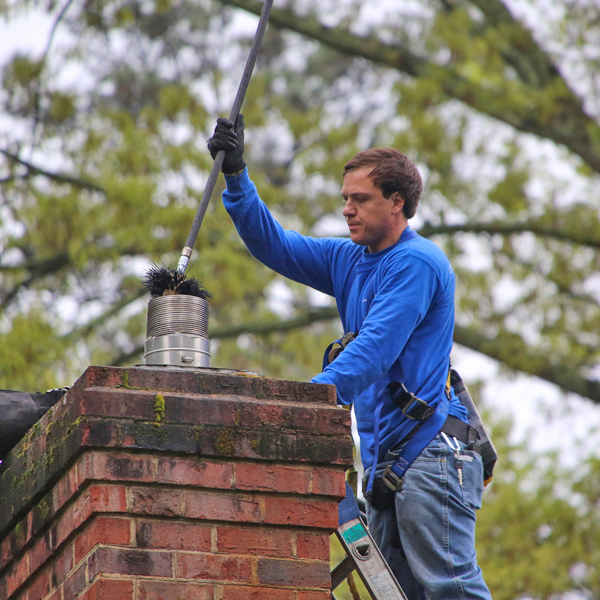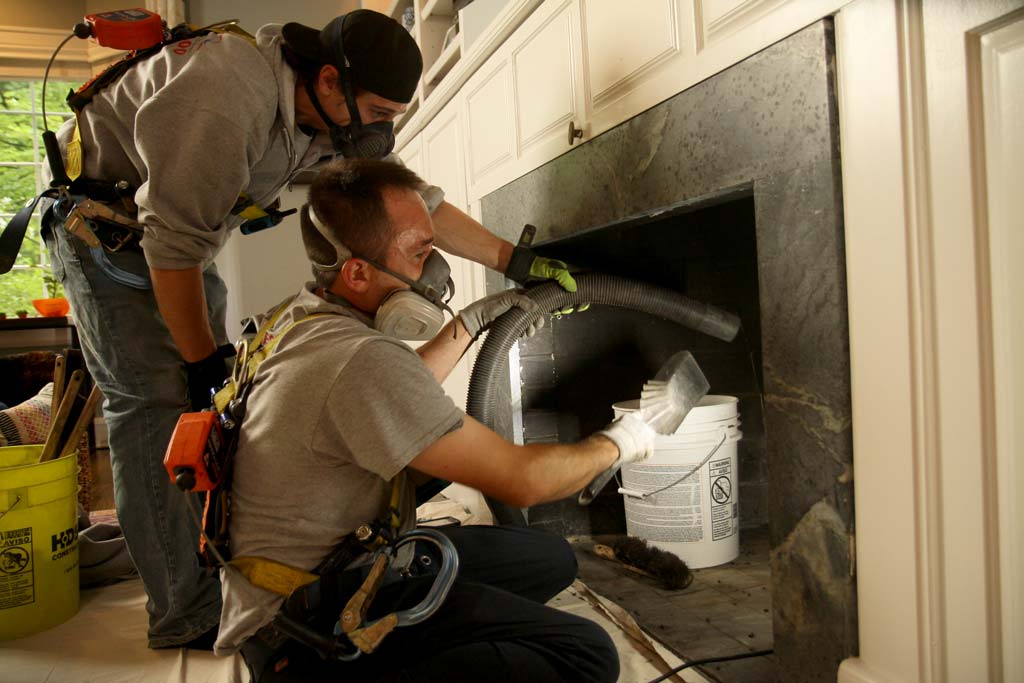Chimney Clean San Jose Services: Your Trusted Partner for a Safer Home
Chimney Clean San Jose Services: Your Trusted Partner for a Safer Home
Blog Article
Smokeshaft Cleansing: A Step-by-Step Guide to Maintaining a Healthy Fire Place
Maintaining a healthy fire place is critical for the security and performance of your home. Normal chimney cleansing is a crucial part of this maintenance routine. In this step-by-step guide, we will certainly offer you with in-depth guidelines on exactly how to effectively clean your smokeshaft, guaranteeing that it functions optimally and lowers the threat of fire threats. By complying with these standards, you will discover exactly how to collect the essential tools, perform a visual assessment, clear debris and accumulation, move the chimney, and complete the final steps for ongoing upkeep. With an expert method and focus to detail, you can with confidence care for your fireplace and appreciate its heat and comfort for years to come.
Collecting the Required Devices
To start the process of smokeshaft cleansing, the initial step is to gather all the essential tools. Having the right devices handy makes certain a efficient and secure cleaning process. The essential devices for chimney cleaning include a smokeshaft brush, a ladder, ground cloth or plastic sheets, a flashlight, gloves, and a dirt mask.
The smokeshaft brush is the primary device utilized to eliminate soot and creosote buildup from the flue. It is very important to select a brush that matches the dimension and shape of your smokeshaft. In addition, a durable ladder is required to access the chimney securely. Make certain the ladder is steady and positioned on a flat surface.
Ground cloth or plastic sheets are vital for shielding the surrounding location from dust and debris. They aid make and contain the mess clean-up less complicated. A flashlight is vital for examining the chimney's interior for any type of signs of damage or obstructions. Handwear covers are essential to shield your hands from residue and various other damaging compounds, while a dust mask aids prevent the inhalation of particles.
Doing a Visual Inspection

Utilizing a flashlight, meticulously examine the indoor wall surfaces of the smokeshaft for any kind of indicators of damages, such as splits, loosened blocks, or mortar degeneration. These concerns can compromise the chimney's structural integrity and present a serious safety risk. Additionally, look for any type of signs of water damage, such as discoloration or efflorescence, as this can indicate a dripping chimney cap or blinking.
Next, check the smokeshaft flue for any obstructions. Look for the visibility of nesting materials, leaves, or particles that might have accumulated in time (Chimney Clean San Jose). These blockages can limit air movement, increase the threat of carbon monoxide build-up, and hinder the smokeshaft's ability to efficiently air vent smoke
Throughout the aesthetic inspection, pay close attention to the smokeshaft crown, which is the top surface area that safeguards the smokeshaft from wetness. Try to find cracks or missing out on items in the crown, as these can enable water to get in the smokeshaft and trigger significant damage.
Clearing Particles and Build-up
After completing the aesthetic inspection, the next action in smokeshaft cleaning involves clearing particles and accumulation to guarantee the correct performance of the fire place. Over time, particles such as leaves, twigs, and animal nests can build up in the smokeshaft, obstructing the circulation of air and creating possible fire dangers.
A smokeshaft brush, especially made for this purpose, is utilized to get rid of loosened particles and creosote from the smokeshaft wall surfaces. It is important to try this out pick a brush that matches the size of your chimney to ensure efficient cleansing.
To start, put the brush into the chimney and relocate it up and down, rubbing the wall surfaces to dislodge any debris or creosote. As soon as the cleaning is complete, utilize a vacuum cleanser or a chimney brush extension to eliminate the dislodged particles from the fireplace.

Brushing Up the Smokeshaft
The sweeping of the chimney is an important step in preserving a healthy and balanced fireplace. In time, soot, creosote, and other particles can build up in the smokeshaft, blocking the circulation of air and possibly causing an unsafe buildup of flammable products. Regular chimney sweeper not just makes sure appropriate air flow yet likewise protects against the danger of chimney fires.
When it pertains to chimney sweeping, it is very recommended to hire a specialist chimney move. These professionals have the understanding and devices essential to securely and efficiently eliminate the built up debris from your smokeshaft. They will generally begin by covering the fire place to prevent any type of soot or debris from entering your home. Utilizing customized brushes and vacuum cleaner equipment, they will after that clean up the smokeshaft inside out, ensuring that all the accumulation is extensively removed.
It is vital to note that the frequency of chimney sweeping depends upon a number of variables, such as the sort of fuel made use of, the amount of usage, and the sort of smokeshaft. As a basic regulation of thumb, it is recommended to have your smokeshaft inspected and brushed up at the very least annually.
Final Steps and Upkeep
After completing the smokeshaft sweeping click over here process, the initial step in the last upkeep is to examine the smokeshaft cap and spark arrestor. These parts avoid particles, animals, and rain from going into the chimney.

Inspect the within the fireplace for any indicators of deterioration, such as cracks, loose bricks, or damaged mortar. These concerns can impact the structural honesty and weblink security of the fire place. Seek advice from a professional smokeshaft sweep or mason to address them quickly. if any problems are detected.
Ultimately, take into consideration installing carbon monoxide gas detectors near the fireplace and throughout your home. These gadgets can spot the existence of this hazardous gas, providing a very early caution system in instance of a smokeshaft malfunction. Routinely examine and replace the batteries in these detectors to ensure their efficiency.
Verdict
Finally, complying with a step-by-step guide for smokeshaft cleaning is critical in keeping a healthy fireplace. By collecting the necessary devices, performing a visual assessment, removing particles and build-up, and sweeping the chimney, property owners can ensure the safety and security and performance of their fire place. Normal maintenance and cleaning will aid stop chimney fires and enhance air top quality in the home. It is important to prioritize chimney cleaning as a part of overall home upkeep.
The important devices for smokeshaft cleaning include a chimney brush, a ladder, decrease fabrics or plastic sheets, a flashlight, gloves, and a dirt mask.
A smokeshaft brush, specifically developed for this objective, is utilized to eliminate loose debris and creosote from the smokeshaft wall surfaces. Normal smokeshaft brushing up not only guarantees appropriate air flow but likewise prevents the danger of chimney fires.
When it comes to chimney sweeping, it is very advised to hire an expert smokeshaft move. After finishing the chimney sweeping process, the very first step in the final maintenance is to check the chimney cap and trigger arrestor.
Report this page